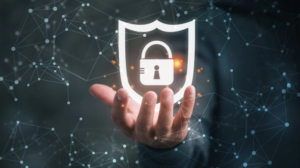In the ever-evolving landscape of cybersecurity, one name stands out as an icon of digital defense. With a reputation built on expertise, innovation, and unwavering commitment to safeguarding online realms, this cybersecurity icon has become synonymous with protection in the virtual world.
As I delve into the realm of cybersecurity, I can’t help but be drawn to the remarkable journey of this iconic figure. Their contributions have not only shaped the way we perceive online security but have also set new standards for excellence in the field.
Join me as we explore the legacy, impact, and future implications of this cybersecurity icon, whose pioneering spirit continues to inspire and lead the way in an increasingly interconnected world.
Cybersecurity Icon
Early Symbols and Their Meanings
 In the early days of cybersecurity icon, symbols such as padlocks, shields, and keys were commonly used to represent security concepts. These symbols, rooted in physical world analogies, helped convey the idea of protection and defense in the digital realm. For example, a padlock symbolizes locking out unauthorized access, while a shield represents defense against cyber threats. These symbols laid the foundation for the visual language of cybersecurity icon, setting the stage for the evolution of more complex and nuanced icons.
In the early days of cybersecurity icon, symbols such as padlocks, shields, and keys were commonly used to represent security concepts. These symbols, rooted in physical world analogies, helped convey the idea of protection and defense in the digital realm. For example, a padlock symbolizes locking out unauthorized access, while a shield represents defense against cyber threats. These symbols laid the foundation for the visual language of cybersecurity icon, setting the stage for the evolution of more complex and nuanced icons.
Today, cybersecurity imagery has evolved to reflect the sophisticated nature of modern threats and technologies. Icons now encompass a wider range of concepts, including encryption, biometrics, and artificial intelligence. For instance, a lock and key icon might represent encryption, highlighting the secure transmission of data. Biometric icons, such as fingerprints or iris scans, symbolize advanced authentication methods. Moreover, icons depicting machine learning algorithms signify the use of AI in threat detection and mitigation. These current trends in cybersecurity imagery reflect the growing complexity and dynamism of the cybersecurity landscape.
Key Symbols in Cybersecurity
The Padlock Icon
 Reflecting the concept of secure data, the padlock icon is one of the most recognizable symbols in cybersecurity icon. It signifies encryption and protection of information from unauthorized access. The padlock icon is commonly used in web browsers to indicate a secure connection, reassuring users of data safety when browsing websites.
Reflecting the concept of secure data, the padlock icon is one of the most recognizable symbols in cybersecurity icon. It signifies encryption and protection of information from unauthorized access. The padlock icon is commonly used in web browsers to indicate a secure connection, reassuring users of data safety when browsing websites.
The shield icon embodies the idea of defense and protection in cybersecurity icon. It represents resilience against cyber threats and acts as a barrier between sensitive data and potential attackers. Often seen in antivirus software and security platforms, the shield icon conveys a sense of safeguarding digital assets and systems from malicious activities. Firewall and network security graphics visualize the protection of networks from unauthorized access and cyber intrusions. These graphics often depict a virtual barrier that monitors and controls incoming and outgoing network traffic. Symbolizing the frontline defense mechanism, firewall icons emphasize the importance of securing network boundaries to prevent cyber attacks and ensure data integrity.
Importance of Icons in Cybersecurity Communication
Enhancing User Awareness
 Icons play a crucial role in enhancing user awareness in cybersecurity icon. They serve as visual cues that help individuals quickly identify security-related concepts and actions. By incorporating intuitive symbols such as padlocks for encryption or shields for defense, users can easily grasp the significance of various security measures without the need for extensive explanations. This visual communication not only simplifies complex security concepts but also reinforces best practices by making them more memorable.
Icons play a crucial role in enhancing user awareness in cybersecurity icon. They serve as visual cues that help individuals quickly identify security-related concepts and actions. By incorporating intuitive symbols such as padlocks for encryption or shields for defense, users can easily grasp the significance of various security measures without the need for extensive explanations. This visual communication not only simplifies complex security concepts but also reinforces best practices by making them more memorable.
In the realm of cybersecurity icon, where intricate technologies and threats abound, simplifying complex security concepts is paramount. Icons serve as a powerful tool in breaking down these concepts into digestible visuals that anyone, regardless of technical expertise, can understand. By using familiar symbols like locks and keys to represent encryption or shields for protection, even intricate ideas such as network security or biometric authentication can be made comprehensible at a glance. This simplification aids in educating users, fostering a cybersecurity-conscious culture, and promoting safer online practices.

